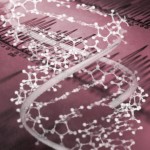 A Cohesive Model of Neurotransmitter Dysfunction
A Cohesive Model of Neurotransmitter Dysfunction
The Bundle Damage Theory and The Monoamine Theory are not mutually exclusive of each other. Instead these two theories can be viewed a complementary in that they address different mechanisms of action leading to neurotransmitter dysfunction and compromised electrical flow out of the post-synaptic neuron.
The Monoamine Theory addresses low levels of neurotransmitters in the synapse as the etiology of impedance of electrical flow needed to regulate function and keep disease symptoms under control. Whereas, the Bundle Damage Theory addresses damage to the neuron structures (primarily post-synaptic) which impede the flow of electricity needed to regulate function and keep disease symptoms under control. With the monoamine theory and the bundle damage theory the flow of electrical energy needed to regulate function is not adequate.
Differentiation of the two theories lies in the etiology of the dysfunction. Under monoamine theory, returning neurotransmitter levels to normal will relieve disease symptoms. Under the bundle damage theory synaptic neurotransmitter levels need to be established that are higher than the reference range of the population.
It is the mechanical damage to the post-synaptic neurons as suggested by the bundle damage theory and not the synaptic neurotransmitter levels that is the primary cause of monoamine disease (including depression, trichotillomania, migraines, anxiety, ODC, ADD/ADHD and fibromyalgia). This subset is composed of about 88% of adult patients and 100% of the elderly patients with depressive symptoms – the nonresponders (those that do not experience any benefit from reuptake inhibitor drugs) from the depression studies cited previously.
Neuron destruction leads to increased symptoms
Neurons are intended to function for life. Loss of a neuron to apoptosis (cell death) is permanent, although in limited areas of the brain neurons may regenerate to replace the neurons that have undergone apoptosis.58 As neuron cells die in the postsynaptic neuron it’s function slowly fades until the neurotransmitter production decreases and eventually stops over time. As the neurons die, a person will experience more and more symptoms of imbalance; these can include mood swings, headaches/migraines, OCD tendencies, decreased focus/concentration, decreased memory, anxiety, sleep imbalances, hormone imbalances, food cravings and increased pain amongst others.
The solution – turn up the voltage
The only way to increase neurotransmitter levels in the central nervous system is to administer amino acid precursors which cross the blood brain barrier and are then synthesized into neurotransmitters. Increasing neurotransmitter levels in the synapse is analogous to increasing the voltage in an electrical wire, where by turning up the voltage you get more electricity out the other end of the wire.
In the case of neurotransmitter disorders, the neurons of the neuron bundles are damaged to the point that the electricity flowing out of the neuron bundles is diminished, and disease/symptoms develop. Increasing neurotransmitter levels through the administration of properly balanced amino acid precursors will effectively increase voltage in the remaining viable neurons in the bundle. This causes the electrical flow out of the damaged neuron bundles to increase to the point that normal regulation and/or control is once again observed. In this state, from a clinical standpoint, the symptoms of disease are under control.
If this all sounds like Charlie Brown’s teacher (i.e,”mhua, mhua, mhua…) try this: There isn’t a feedback loop in the brain for neurotransmitter production. Therefore, even if 50% of the neurons in a neuron bundle are damaged/destroyed, if we give the remaining neurons more amino acids (in the right dosages), the remaining neurons will manufacture more neurotransmitters, effectively alleviating symptoms and restoring normal function.
But how are neurons damaged to begin with? That will be covered in the next post.

